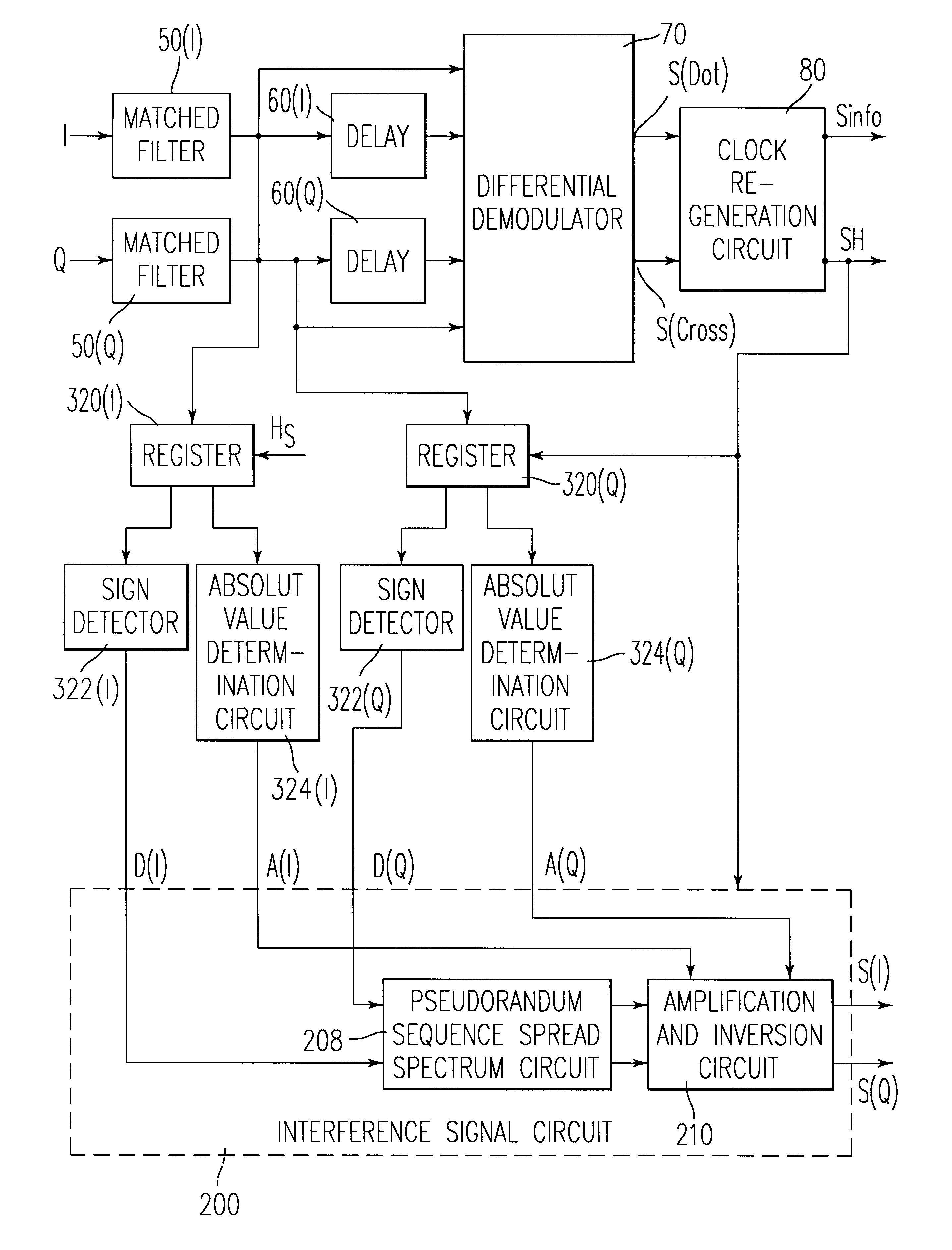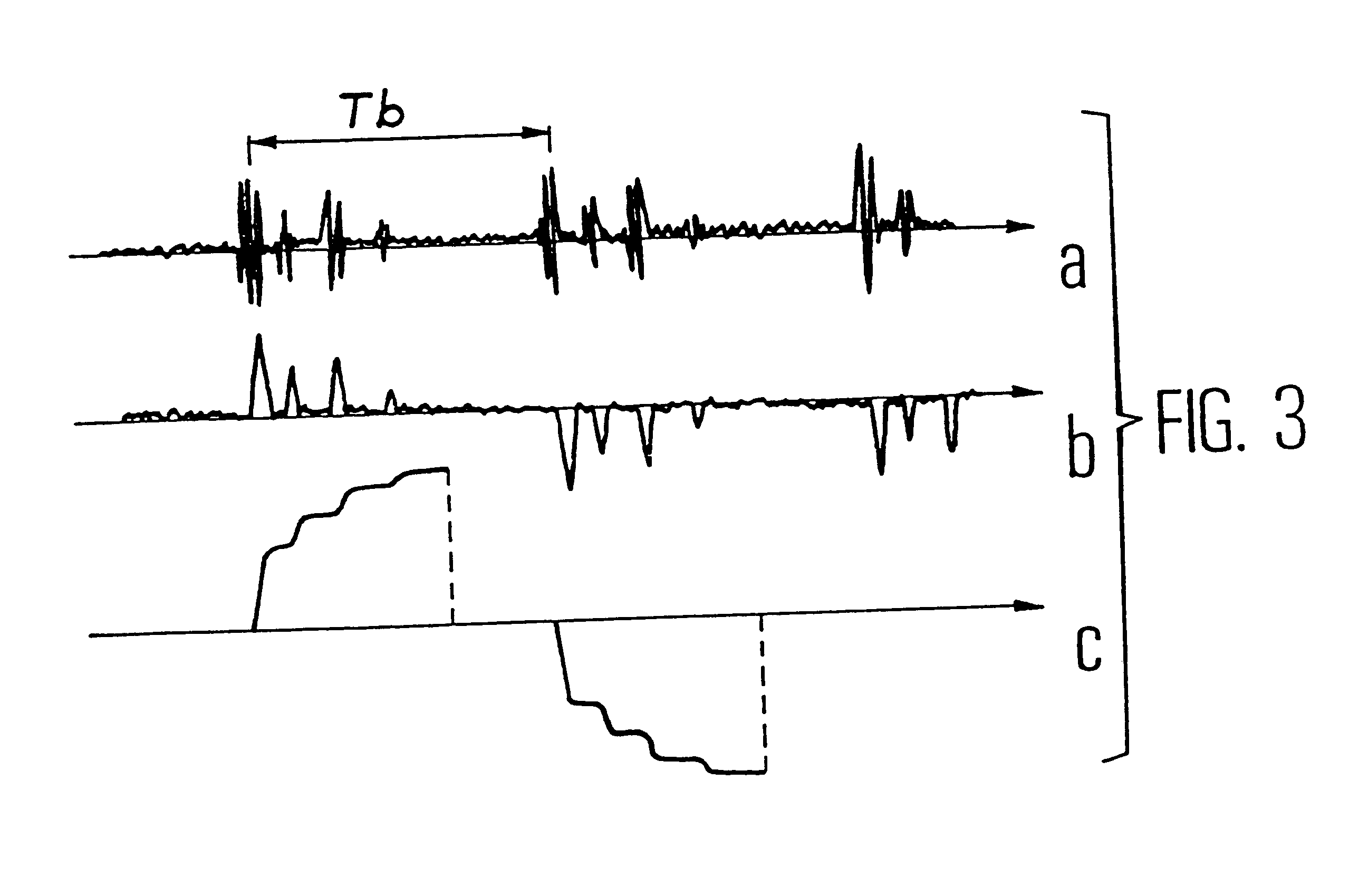Direct sequence spread spectrum differential receiver with mixed interference signal formation means
- Summary
- Abstract
- Description
- Claims
- Application Information
AI Technical Summary
Problems solved by technology
Method used
Image
Examples
Embodiment Construction
More specifically, the present invention relates to a direct sequence spread spectrum differential receiver with mixed control signal formation means for the formation of an interference signal corresponding to the multiple access noise, said receiver comprising:
a) a first channel for processing a first part (I) of the signal received, said first part being the part in phase with the carrier received, said first channel comprising:
i) first matched filtering means corresponding to a particular ps eudorandom sequence, said first means supplying a first filtered signal (I.sub.k),
ii) first delay means supplying a first delayed, filtered signal (I.sub.k-1),
b) a second processing channel of a second part (Q) of the signal received, said second part being the part in phase quadrature with the carrier received, said second channel comprising:
i) second matched filtering means corresponding to said particular pseudorandom sequence, said second means supplying a second filtered signal (Q.sub.k...
PUM
 Login to view more
Login to view more Abstract
Description
Claims
Application Information
 Login to view more
Login to view more - R&D Engineer
- R&D Manager
- IP Professional
- Industry Leading Data Capabilities
- Powerful AI technology
- Patent DNA Extraction
Browse by: Latest US Patents, China's latest patents, Technical Efficacy Thesaurus, Application Domain, Technology Topic.
© 2024 PatSnap. All rights reserved.Legal|Privacy policy|Modern Slavery Act Transparency Statement|Sitemap



